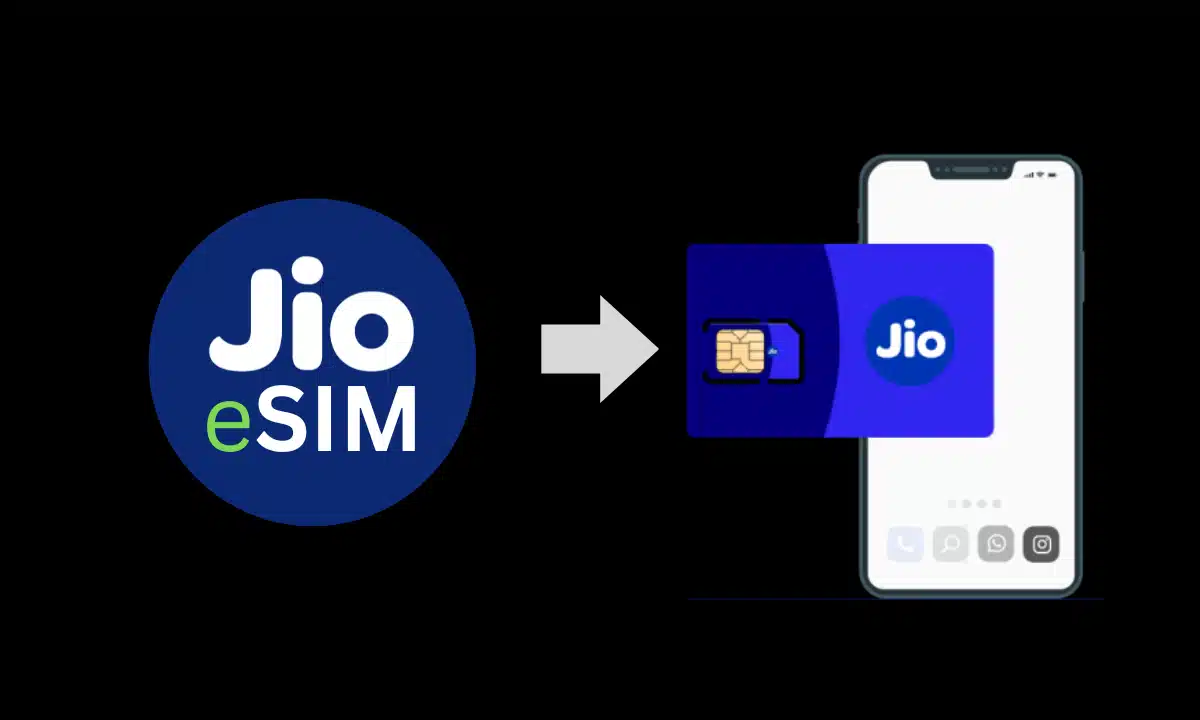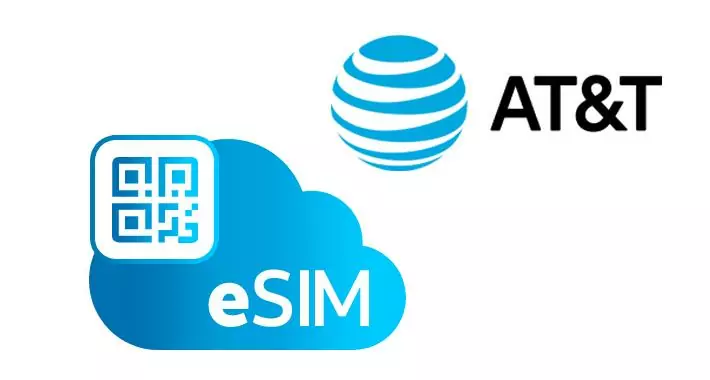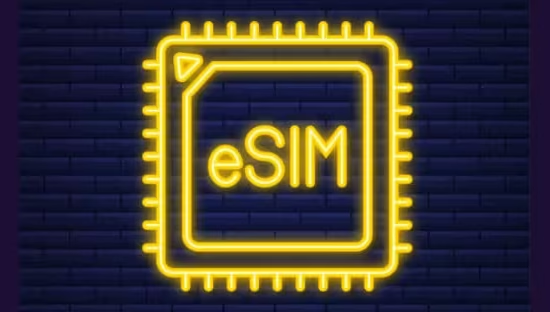
Jio Leads the eSIM Revolution: What it Means for India’s Connected Future
An embedded SIM card, also known as an eSIM, is a digital SIM card that allows you to activate a cellular plan from your carrier without having to use a physical nano-SIM. eSIMs are directly embedded into cellular-enabled devices and cannot be removed. jio esim
With an eSIM, there is no need to obtain a physical SIM card from your carrier, and you can quickly switch between carriers and plans directly from your device’s settings. eSIMs allow for remote provisioning of mobile plans and work profiles.
eSIMs work by storing your mobile subscription profiles digitally. This allows you to change plans and carriers over-the-air without having to swap out physical SIM cards. eSIM-capable devices contain a small chip along with an antenna to connect to cellular networks. The onboard eSIM is paired with your device, so it cannot be removed.
Some key benefits of eSIM technology over traditional physical SIM cards include:
-
Convenience – No need to obtain, swap, and manage physical SIM cards
-
Multi-SIM functionality – Ability to have multiple profiles or plans on one device
-
Hassle-free switching – Quickly change networks and plans over-the-air
-
Better security – Reduced risk of SIM swaps or theft since eSIM is embedded
-
Streamlined connectivity – Ideal for cellular-enabled wearables and IoT devices
-
Flexible plans switch data plans for different uses, locations, travel, etc
In summary, eSIM delivers greater flexibility, convenience, and security through its embedded nature and over-the-air provisioning capabilities. It eliminates the need for physical SIM cards while still providing the same core functions of subscriber identification and network connectivity.
History of eSIM jio esim
eSIM (embedded SIM) technology was first invented and patented by Apple in 2010. However, it took almost a decade after that for eSIM technology to become commercially available in devices.
Some key milestones in the development of eSIM technology include:
- 2016 – The GSM Association finalizes the first eSIM specification for M2M (machine-to-machine) devices. This allows for global interoperability of eSIM.2017 – eSIM makes its debut in consumer devices with the cellular iPad Pro 2nd generation and Apple Watch Series 3 featuring eSIM support.2018 – Google Pixel 2 and Pixel 3 phones feature eSIM capabilities. Microsoft also adds eSIM support to Surface Pro LTE and Surface Go LTE devices.2020 – iPhone 12 models are the first iPhones to come with eSIM support. Many Android flagships also added eSIM that year.2021 – eSIM adoption gains speed globally with support from major carriers like T-Mobile, Vodafone, and others.2022 – Widespread eSIM integration across various devices and regions. Significant improvements in user interface for managing eSIM profiles and an increase in the number of carriers offering eSIM plans.2023 – Expansion of eSIM technology into IoT and wearables beyond smartphones and tablets. Enhanced security features and seamless international roaming solutions become more prevalent, further promoting the adoption of eSIM technology.
So in summary, eSIM technology was invented by Apple over a decade ago but took time to become commercially viable globally. The last few years saw eSIM gain mainstream adoption in consumer electronics and networks.
Jio and eSIM
Jio launched its eSIM service in September 2021, becoming the first telecom operator in India to offer eSIM support. This allows Jio customers to activate Jio service on their eSIM-enabled devices without needing to use a physical SIM card.
Some key facts about Jio’s eSIM service:
-
It is supported on select iPhone models (iPhone XS, XS Max, iPhone XR, iPhone 11, iPhone 12, and iPhone 13, 14 and 15 series), along with Google Pixel 6, 7 and Pixel 8 series phones initially. More devices are expected to be added over time.
-
The eSIM activation process can be done through the MyJio app or at a Jio store. Users have to scan a QR code during activation.
-
Jio eSIM works on 4G as well as 5G networks. With the 5G rollout underway, users can enjoy high-speed 5G services on an eSIM-activated device.
-
Jio eSIM allows dual SIM functionality. Users can use one physical SIM and one eSIM simultaneously.
-
Jio eSIM has the same plans and tariffs as regular physical Jio SIM. There are prepaid, postpaid, and international roaming options available.
-
Having an eSIM makes it convenient for users to quickly switch between networks or use local data services when traveling abroad.
-
Jio became the first Indian telecom operator to achieve this eSIM milestone, in keeping with its reputation for launching advanced technologies.
Devices compatible with Jio eSIM
Jio’s eSIM service is supported on a limited number of devices currently. Here are some of the smartphones that are compatible with Jio eSIM:
- Apple iPhone: Starting from iPhone XS, XS Max, and XR, including all newer models up to the latest iPhone 13 and 14 series.
- Samsung Galaxy: Selected high-end models like the Galaxy Z Fold series, the Galaxy Z Flip series, and the Galaxy S20, S21, and S22 series.
- Google Pixel: Pixel 3 and later models, including Pixel 3a, Pixel 4, Pixel 5, Pixel 6, and the most recent Pixel 7 series.
- Motorola Razr: The newer foldable Motorola Razr models that support eSIM.
It’s important to note that availability and compatibility can change over time, so it’s always best to check with Jio for the most current and comprehensive list of compatible devices. Additionally, ensuring your device is unlocked and supports the bands used by Jio is crucial for proper functioning.
So in summary, the latest iPhones, Pixel devices, premium Samsung Galaxy smartphones, Motorola RAZR 5G, and some Vivo and Oppo phones support Jio’s eSIM service currently. The list is expected to expand as more smartphone manufacturers integrate eSIM technology into their devices.
How to activate Jio eSIM
Activating a Jio eSIM on your device is easy and straightforward. Here is a step-by-step guide:
-
Ensure your device supports eSIM functionality. The latest iPhones, Pixel phones and Samsung Galaxy S22 series support eSIM.
-
Download the Jio eSIM activation app on your smartphone – MyJio for Android and Jio eSIM for iPhones.
-
Open the app and select the eSIM option.
-
Scan the QR code shown on the screen using your smartphone camera. This will pull the eSIM profile from Jio servers.
-
The eSIM profile will get downloaded and installed automatically. You will get a confirmation once eSIM activation is successful.
-
Follow on-screen instructions to complete the verification process. This involves entering the OTP sent to your registered mobile number.
-
Congratulations! eSIM activation is now complete. You can start using Jio mobile services on your device through eSIM.
-
Go to network settings on your phone and select Jio eSIM as the preferred network.
-
You can now start using Jio 4G data, calls, and SMS through eSIM without having to use a physical SIM card.
That’s it! The Jio eSIM activation process is quick and convenient. With eSIM, you don’t need to go through the hassle of obtaining a physical nano-SIM card.
Jio eSIM Plans
Jio offers both prepaid and postpaid plans compatible with eSIM-activated devices.
For prepaid users, Jio provides all-in-one plans starting from Rs 199 per month to Rs 2,399 per month. These plans offer unlimited voice calls and SMS, along with data and access to Jio apps. Some highlights of Jio prepaid eSIM plans are:
- Rs 199 plan – 1.5 GB daily data, unlimited calling, 100 SMS per day, 28 days validity
- Rs 555 plan – 1.5 GB daily data, unlimited calling, 100 SMS per day, 84 days validity
- Rs 2,399 plan – 2 GB daily data, unlimited calling, 100 SMS per day, 365 days validity
Jio also has affordable top-up plans like Rs 101 (12 GB data) and Rs 251 (50 GB data) to extend your data benefits.
For postpaid users, Jio offers unlimited plans starting at Rs 199 per month going up to Rs 1499 per month with large data limits and access to streaming benefits like Netflix, Amazon Prime etc. Key postpaid plans with eSIM are:
- Rs 199 plan – 25 GB data, unlimited calling, 100 SMS per day
- Rs 399 plan – 75 GB data, unlimited calling, 100 SMS per day
- Rs 599 plan – 100 GB data, unlimited calling, 100 SMS per day + Netflix, Amazon Prime, Disney+ Hotstar
- Rs 1499 plan – 200 GB data, unlimited calling, 100 SMS per day + Netflix, Amazon Prime, Disney+ Hotstar
Jio eSIM allows you to easily switch between prepaid and postpaid plans as per your needs. Overall, Jio offers very competitive eSIM plans with great data benefits and access to streaming services.
Benefits of Jio eSIM
Jio eSIM offers several key benefits to users:
-
Dual SIM functionality: eSIM allows you to activate a secondary Jio connection on your phone while still using your primary physical SIM. This gives you the flexibility of having two different phone numbers and data plans on one device.
-
Easy switching between plans: With eSIM, you can digitally switch between Jio prepaid and postpaid plans instantly without having to physically change SIM cards. This makes it very convenient to choose the optimal plan for your usage needs.
-
Remote provisioning: eSIM profiles can be activated and managed remotely over-the-air. This enables instant activation of cellular plans without having to visit a physical store.
-
Flexibility: You can activate and deactivate eSIM plans on demand depending on your requirements. For example, you can get a monthly prepaid plan when traveling abroad and discontinue it when back home.
-
Enhanced user experience: Having dual SIM functionality on a single physical SIM slot leads to a cleaner phone design without compromises. It also reduces the hassles of swapping physical SIM cards.
In summary, Jio eSIM offers greater flexibility, convenience, and enhanced user experience through features like dual SIM capabilities, easy plan switching, and remote provisioning. For consumers, it represents the next evolution in managing cellular connectivity.
Limitations of Jio eSIM
The biggest limitation of Jio’s eSIM service is phone compatibility. As of now, only a handful of high-end smartphone models support eSIM in India. These include the iPhone XS, iPhone XS Max, iPhone XR, iPhone 11, iPhone 12 and iPhone 13 series. So if you don’t have one of the recent iPhone models, you won’t be able to use Jio’s eSIM service.
This severely limits the adoption and usage of eSIM in India. Most Android smartphones, even flagship devices from Samsung, OnePlus, Xiaomi, etc do not have eSIM capability yet. Jio will need these popular Android OEMs to launch eSIM-enabled devices in India to drive up eSIM activation.
Another disadvantage compared to physical SIM is that you cannot easily switch between eSIM profiles by swapping SIM cards. To change your eSIM profile, you will need to scan a new QR code and go through the activation process again. This makes having dual SIMs with eSIM a bit complicated.
The lack of a physical card also means users cannot quickly transfer their mobile number by simply moving the SIM card to another phone. This convenience is lost with eSIM.
Overall, while eSIM offers certain advantages, its adoption in India is limited due to lack of smartphone support and inconvenience compared to physical SIM cards. As more eSIM-capable Android devices launch in India, the technology will likely gain more relevance. But for now, its appeal is mostly limited to recent iPhones.
Future of eSIM in India
eSIM technology has tremendous growth potential in the Indian market. Here are some projections for the future of eSIM in India:
-
Growth projections: eSIM connections in India are projected to grow rapidly from around 5 million in 2021 to over 100 million by 2025. Several research firms have predicted massive growth, with Counterpoint Research estimating around 350 million eSIM-capable smartphones will be sold in India by 2025.
-
Impact on telcos: eSIM is expected to disrupt traditional SIM-based connectivity models of telcos. It will enable easier switching between service providers, impacting customer loyalty. Telcos will have to offer more competitive plans and better service to retain customers. The adoption of eSIM will also reduce distribution and operational costs related to physical SIMs for telcos.
-
Impact on consumers: For consumers, eSIM will offer greater flexibility and convenience to switch connectivity across devices and service providers seamlessly. Roaming will become easier as people can switch local data plans when traveling abroad quickly. Multi-SIM connectivity across devices will also become simpler for consumers.
-
Other impacts: eSIM has the potential to accelerate IoT adoption as it makes connecting various devices and machines simpler. It can also enable new applications like digital wallets based on integrated SIMs and spur innovation in fields like smart vehicles, wearables and more. Widespread eSIM availability will support the Digital India mission.
In summary, eSIM adoption is poised for massive growth in India, which will positively impact consumers while challenging traditional telco business models. It is an exciting technology to watch out for in the coming years.
Conclusion
Jio’s launch of eSIM support in India is a major step forward for cellular connectivity in the country. With eSIM, users can quickly activate cellular service through a digital profile instead of having to physically insert a SIM card.
Throughout this article, we have covered the key aspects of Jio’s eSIM service:
-
eSIM provides convenience by removing the need for a physical SIM card. Users can activate or switch service providers easily.
-
A wide range of recent iPhones, Google Pixel phones, and smartwatches support eSIM functionality. More devices are expected to add support as eSIM gains popularity.
-
Activating Jio eSIM requires scanning a QR code through the MyJio app on your eSIM-supported device. The process is straightforward and completed digitally.
-
Jio offers the same prepaid and postpaid plans through eSIM that are available with physical SIMs. There are no pricing differences.
-
Benefits of Jio eSIM include easier activation, the ability to switch plans quickly, and built-in support for dual SIM functionality on compatible devices.
-
Limitations are minor but worth noting: eSIM plans cannot be transferred between devices, very few phones support eSIM currently, and eSIM activation requires a smartphone and working data connection.
While still in its early days, eSIM adoption is expected to grow substantially in India over the coming years. Jio’s eSIM launch paves the way for this digital transformation in cellular connectivity for both consumers and providers in India.
Here are some indicative prepaid eSIM card prices for India from a few of the best eSIM companies:















